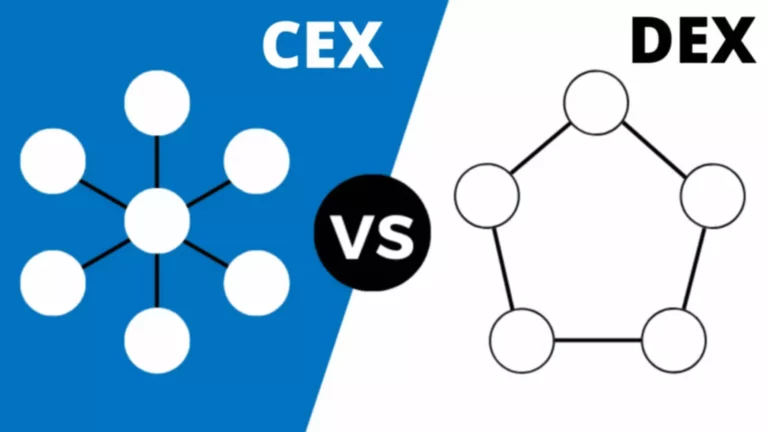Of course, the process can also differ slightly from hardware wallet to hardware wallet. However, if you’re interested in Ledger devices, make sure you check out the full article on how Ledger wallets process transactions. Then, to make sure your hardware wallet can use that chip, it also needs an operating system.
With personal cyber security being a number one priority in today’s world of remote working and digital connectivity, it has become more important to keep your data safe and secure. In the case of cryptocurrencies, there are many options that you can
choose from to keep your hard-earned coin safe. Of all the software and hardware choices out there, a hardware wallet is one of the simplest and most effective ways to store your currency. Therefore, your private keys remain safe from online hacks or virus threats while managing or transferring your crypto assets. That’s why hardware wallets are not vulnerable to such cyberattacks, unlike exchanges and other hot wallets.
Setting up Trezor Safe 3
Banking services provided by Community Federal Savings Bank, Member FDIC. Alright – so now we’ve introduced the idea of wallets, let’s keep reading to find out which one is best for you. Navigating Web3 securely means staying equipped with the right tools, as well as understanding the risks you face in this new environment. Ledger’s mission is to provide you with both, so that you can explore with confidence. When covering investment and personal finance stories, we aim to inform our readers rather than recommend specific financial product or asset classes.
Setup is simple, and you’re given a random twelve-word recovery sentence to write down and put away. No drivers are required either, another nice perk to make it even smoother for beginners – just plug it into the USB port and get going. Scammers are also always coming up with new tactics, and many crypto scams don’t involve breaking into your wallet at all. They may, for instance, involve tricking you into making a sketchy investment. Staying informed about the latest threats could be important if you want to be active in crypto investing.
Custodial v Non-Custodial Wallets
When you want to transact or check your balance, you simply plug in the device and enter your PIN code to access your wallet. In a world where digital assets are becoming more valuable than ever, the need to protect them from cyber threats is critical. For the most https://www.xcritical.in/ part, using a hardware crypto wallet merely requires some good old-fashioned common sense along with standard crypto security tips. If you want to know how to protect cryptocurrency or how to protect a crypto wallet, you might be wondering which is the most secure.
- However, the FBI can seize a crypto wallet as part of asset forfeiture in some cases.
- When it comes to comparing the different crypto wallets, there is an ongoing debate.
- If you don’t have anything in your wallet, you won’t draw the attention of thieves.
- However, if you’re interested in Ledger devices, make sure you check out the full article on how Ledger wallets process transactions.
This is exactly why Ledger devices use a custom operating system called BOLOS. This concept of trustlessness is a core component of blockchain technology. It seeks to reduce the level of trust participants must place in other individuals, organisations, hardware cryptocurrency wallet and even governments, while ensuring that no single bad actor can compromise this system. When you hold your own private keys, you and only you are in control of your finances. No single person or group can tamper with transactions or take control.
If your hardware wallet has a screen, double check that the recipient’s address matches up with what the hardware wallet is displaying before starting a transaction. So to answer the question “how to keep my crypto assets safe”, the only true answer should be by using hardware wallets. Digital wallets are more vulnerable to hacking and cyber-attacks as the private keys are not held offline. Exchange wallets suffer from a similar issue and require users to place their trust in a third party to safeguard their assets. This means they are no longer in sole control of their assets; rather, the exchange holds that responsibility. Unfortunately, if something goes wrong with the exchange, the user’s crypto may be in jeopardy.
Limited recovery options
Poor security systems, exploits, or mismanagement make them prime targets for criminals. Depending on which model you get, these devices can either be connected to your computer with a USB cable and an iOS or Android enabled mobile device, or with Bluetooth capability. It’s important to know that many of these device advertise compatibility with DeFi applications.


A “hot” wallet is usually the default option offered to the user, or account holder, by the cryptocurrency exchange. They are often referred to as a “custodial
wallet” by the cryptocurrency community at large. Custodial or “hot” wallets are only accessible online and are considered to be less secure because they offer hackers and cybercriminals more digital attack vectors to steal a user’s assets. Although
many exchanges maintain that their custodial wallets are completely secure, using them requires an account holder to trust a third-party with their precious assets.
A Hardware Wallet May Be the Safest Option
We’ll walk you through the different types of crypto wallets and a few helpful security fundamentals. Since crypto is fully digital and there are no physical assets, protecting it requires some technical know-how. Where you store your digital currency and how it could be susceptible to hacks are important to understand. But by simply keeping your funds offline in a cold wallet and never giving out your password, you should be well protected from such an event. Making sure that your crypto is safe is about bringing together a good wallet, good antivirus software, some password management, multi-factor authentication, and some general scepticism online.
Many of these wallets store your private key and come with software that works in parallel to your wallet device or program. This allows you to view and use your holdings without needing to enter your private keys. There’s nothing too glamorous about securing your crypto with a hardware wallet. Every now and then, you should connect your wallet to your computer and run the accompanying software to see if the device requires some important updates. But if you don’t plan to send, receive, or use your crypto, you should mostly leave your hardware wallet be — until it’s needed. A hardware wallet is a device designed specifically to keep your cryptocurrency safe.


Since the blockchain is everywhere, all you need is your hardware wallet to interact with your tokens. When you purchase bitcoin, you’re given ownership of the amount you bought. The public key is used to encrypt information and create your wallet address, and the private key allows you to decrypt the information, or access your bitcoin. With more than 1,250 assets and 30 currencies supported, the Ledger lets you send and receive securely and without worry, while managing multiple assets on one device. Your data remains tightly locked up and protected by an 8-digit code, while being backed up on a recovery sheet that’s restorable on any Ledger device (and some wallets as well). The argument often made against using a custodial account is that you’re relinquishing control of the private keys to the company that controls the wallet.
Essentially, hardware wallets process blockchain transactions similarly to most wallets that use public and private keys. Firstly, it presents you with the intent (which is essentially the full details of a transaction in an unsigned state), then it prompts you to sign, and transmits that transaction to the blockchain. If you’re not familiar with that process, make sure you check out the full article on how a blockchain transaction works first.
There are some inherent risks with using hardware wallets, and it’s important to understand each one to take the necessary precautions. Composed as a long, alphanumeric code, private keys enable you to access, receive, and send cryptocurrency in a trustless manner, where a third party is not required to verify the transactions. Private keys convey final ownership and control over your cryptocurrency. Public and private key pairs are a core component of public key cryptography, an encryption mechanism designed to protect data from unauthorised access. Together, the keys are used to encrypt and decrypt messages and transactions. Many newcomers buy cryptocurrency from an exchange, such as Coinbase or Kraken, and leave their holdings in those sites’ “custodial” wallets.
However, if you are just getting started with cryptocurrency and are investing a smaller amount, a digital or exchange wallet may be sufficient for your needs. Most hardware wallets can support various cryptocurrencies, and they typically come with software that allows you to manage and monitor your holdings. If all of the recent upheaval in the crypto space has you on the verge of selling, there’s another option worth exploring. Cold storage can protect your digital assets by taking them offline and harboring your crypto in a digital wallet.
A “cold” cryptocurrency hardware wallet is a physical piece of hardware that exists
offline, which allows the user to take control of their cryptographic keys. For many cryptocurrency holders with large amounts or different types of assets, a hardware wallet is preferred for its added layer of offline security. Although a user does
not need a hardware wallet to begin investing in cryptocurrency, it is highly recommended if they are trading in large amounts of coin. A hardware wallet is basically a mini external computer, designed just for the basics of storing, signing, and security. Often times, the more complex a computer is, the more ways it can potentially be infiltrated.
